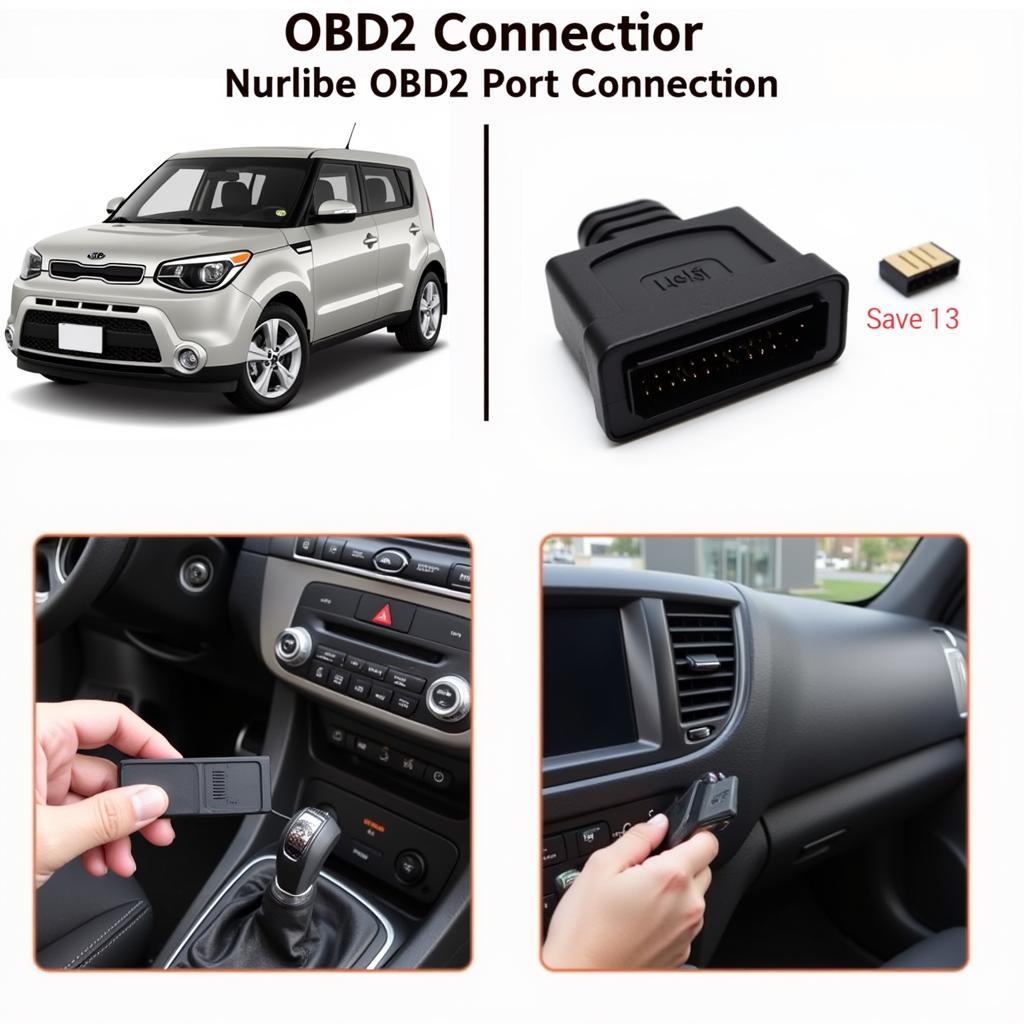Your cart is currently empty!

OBD2 Plug Location for Kia Soul 2013: Everything You Need to Know
Finding the OBD2 port on your Kia Soul 2013 is essential for vehicle diagnostics, maintenance, and performance tuning. Whether you’re a DIY enthusiast or a professional mechanic, knowing its location saves time and frustration. This comprehensive guide covers everything you need to know about the OBD2 plug in your Kia Soul 2013, from its location to its functions.
Why is the OBD2 Plug Important?
The OBD2 port, short for On-Board Diagnostics, is a standardized system that allows external devices to communicate with your car’s computer. This port provides valuable data about your Kia Soul’s engine, transmission, emissions system, and other crucial components.
Locating the OBD2 Port on Your Kia Soul 2013
In most Kia Soul 2013 models, the OBD2 port is located beneath the driver’s side dashboard, near the steering column. It’s typically positioned near the fuse box and may be covered by a small plastic panel.
Here’s a step-by-step guide to help you find it:
- Sit in the driver’s seat and locate the area below the steering wheel.
- Look for a small, trapezoidal-shaped port with 16 pins inside.
- The port is usually black or gray and may have a cover labeled “OBD2” or “Diagnostic.”
 Kia Soul OBD2 Port Connector
Kia Soul OBD2 Port Connector
Common Issues and Troubleshooting Tips
Sometimes, locating the OBD2 port can be tricky. Here are a few troubleshooting tips:
- Check your owner’s manual: The owner’s manual will have a dedicated section outlining the OBD2 port’s location.
- Use a flashlight: A flashlight can help illuminate the area and make the port easier to spot.
- Feel around: If you can’t see the port, gently feel around the area with your fingers. The port has a distinct shape that’s easy to identify by touch.
What Can You Do With the OBD2 Port?
The OBD2 port is a gateway to a wealth of information about your Kia Soul 2013. Here are some of the things you can do:
- Read and clear diagnostic trouble codes (DTCs): Identify and address issues triggering warning lights on your dashboard.
- Monitor real-time engine data: Access information like engine speed, coolant temperature, and oxygen sensor readings.
- Analyze fuel economy and emissions performance: Track fuel consumption patterns and identify potential issues affecting emissions.
- Customize vehicle settings: Modify certain vehicle parameters like door lock behavior or lighting preferences (depending on the model).
Choosing the Right OBD2 Scanner
Selecting the appropriate OBD2 scanner depends on your needs and budget.
- Basic code readers: Affordable and suitable for reading and clearing basic DTCs.
- Advanced scan tools: Offer comprehensive diagnostics, live data streaming, and advanced functionalities like bi-directional control.
- Smartphone apps: Provide a convenient and portable option for basic diagnostics and monitoring.
Conclusion
Understanding the OBD2 port in your Kia Soul 2013 empowers you to take control of your vehicle’s diagnostics and maintenance. By following the steps outlined in this guide, you can easily locate the port and leverage its capabilities to ensure your Kia Soul 2013 continues to run smoothly. Remember to choose the right OBD2 scanner for your needs and always consult your owner’s manual or a qualified mechanic for complex issues.

Leave a Reply